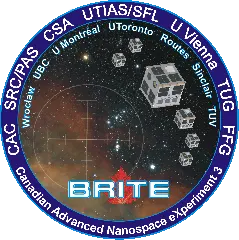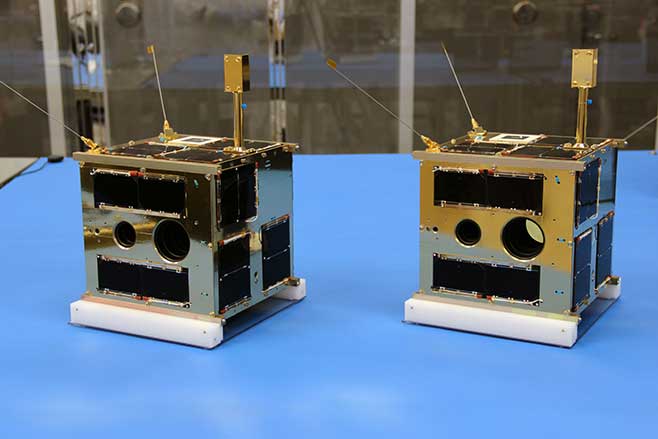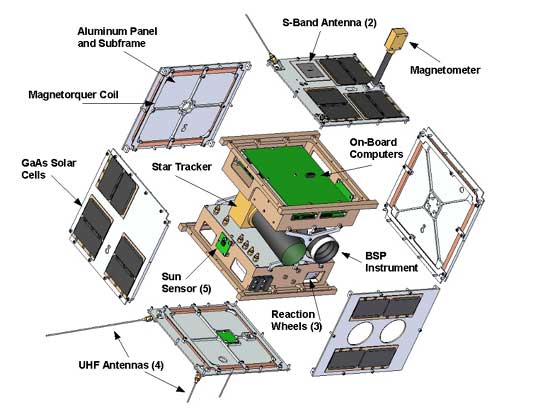BRITE-Constellation


BRITE (BRIght Target Explorer)-Constellation is a multinational effort that relies on pioneering Canadian space technology and a partnership with Austrian and Polish space researchers – the three countries act as equal partners. Canada’s participation was made possible thanks to an investment of $4.07 million by the Canadian Space Agency.
The BRITE-Constellation is a cost-effective fleet of six nanosatellites, each 7-kg, 20 x 20 x 20 cm, based on pioneering Canadian space technology developed at SFL. The BRITE nanosats survey the sky, measuring the brightness and temperature variations of the brightest stars on timescales ranging from hours to months. The photometric data of luminous stars provide time series with unprecedented accuracy that cannot be obtained from the ground due to limitations imposed by the terrestrial atmosphere. BRITE-Constellation investigates the role stellar winds play in setting up future stellar life cycles and reveals pulsations that will allow astronomers to probe luminous star histories and ages through asteroseismology.
Each BRITE nanosat carries a telescope and detector with a large field of view (~24 degrees across) that can monitor multiple target stars, so that differential photometry can be obtained both in brightness and color with precision better than 0.1% for a single observation. The constellation of nanosats offers an order-of-magnitude improvement in science return over a single nanosat, since it allows the use of two different filters and provides superior time and sky coverage.
BRITE-Constellation is the first network of satellites devoted to a fundamental problem in astrophysics, extending and supplementing the spectacular success of the Canadian MOST microsatellite into the domain of nanosats and providing on-orbit experience for future coordinated satellite networks. BRITE-Constellation exploits and enhances Canadian advances in precise attitude control that have opened up for space science the domain of very low cost, miniature spacecraft, allowing a scientific return that otherwise would have had price tags 10 to 100 times higher.
The first two BRITE nanosatellites, BRITE-Austria and UniBRITE, launched 25 February 2013, followed on 21 November 2013 by the BRITE-PL1 “Lem” from Poland. While the SFL technology used in BRITE-PL1 is virtually identical to that used in UniBRITE and BRITE-Austria, BRITE-PL1 carries a different star tracker of Canadian origin, from Sinclair Interplanetary.
Two Canadian satellites, BRITE-Toronto and BRITE-Montreal, launched on 19 June 2014, and the final Polish satellite BRITE-PL2 “Heweliusz” launched 19 August 2014.
All six satellites were designed by the UTIAS/SFL; SFL also built the Canadian pair of satellites.


